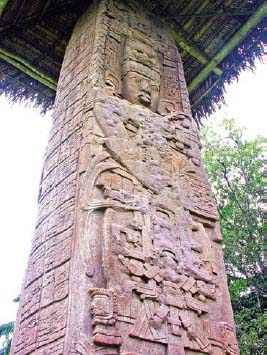The Medieval World, C. 400–1300Pre-Columbian America |
What was Chichén Itzá? |
Chichén Itzá was an important pre-Columbian city built by the Maya and located in the eastern portion of the Yucatan Peninsula in modern-day Mexico. Chichén Itzá is known for a large nine-level pyramid, which sits at the center of a main plaza. The pyramid is topped with a small, square temple accessible by four staircases, one on each side of the structure. The site also includes ball playing courts, palaces, and an astronomical observatory.
The city flourished between 800 and 1200 C.E., which places it mostly in the Post-Classic period of the Maya, the period just before European Conquest of the area. The buildings are decorated with bright, colorful paintings and painted relief sculpture. Popular themes include animals such as jaguars, coyotes, eagles, serpents, and mythological figures. Also found at Chichén Itzá are chacmools, altars in the shape of a reclining figure with hands resting at the sides. Chacmools are common throughout Mesoamerica.

Mayan stelae often depict figurative images and hieroglyphs in low relief.
